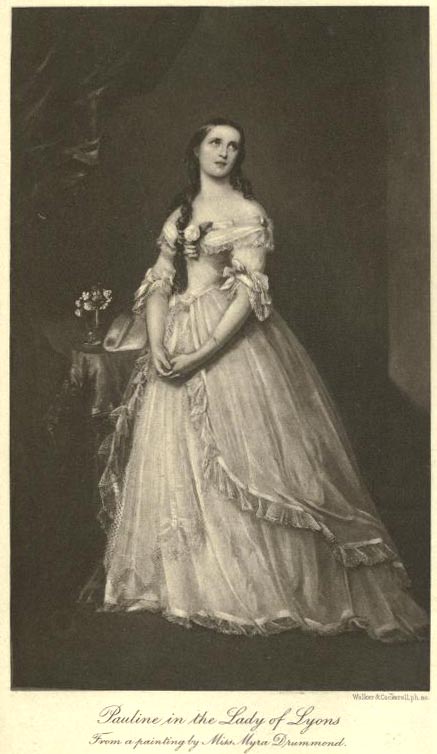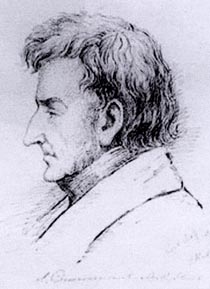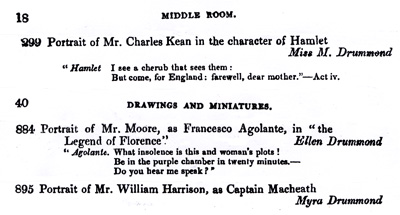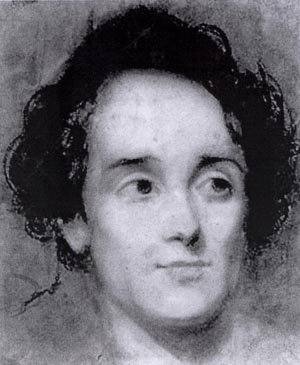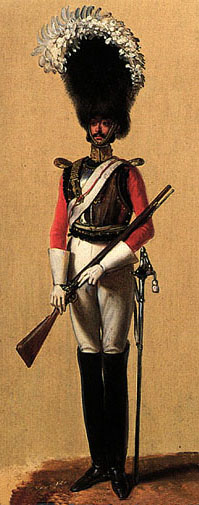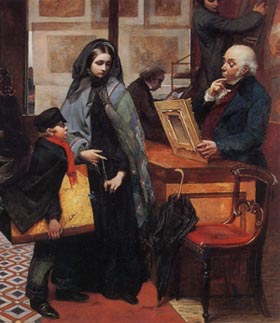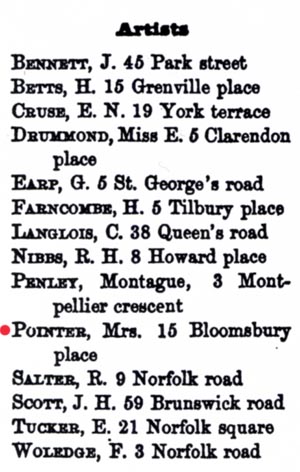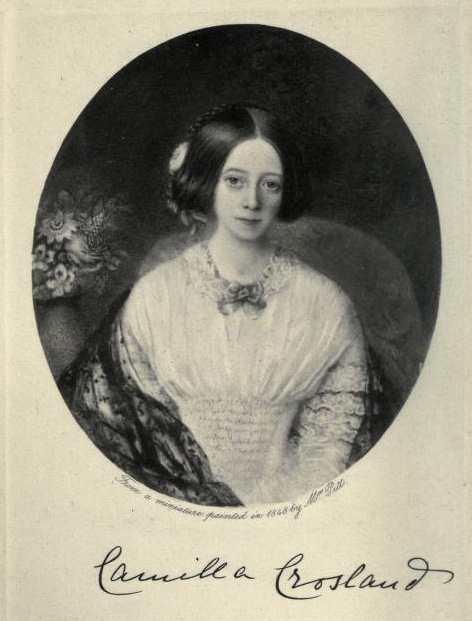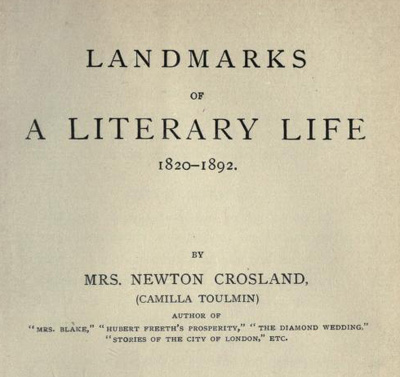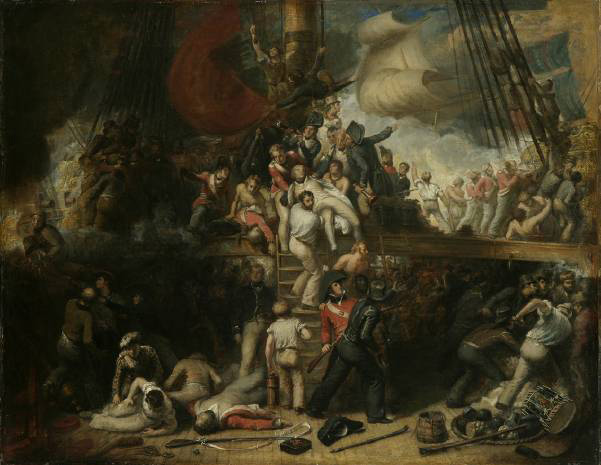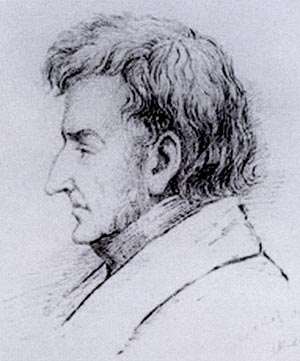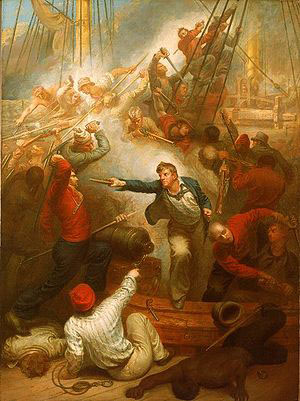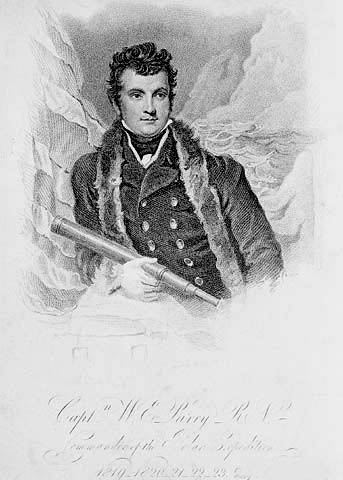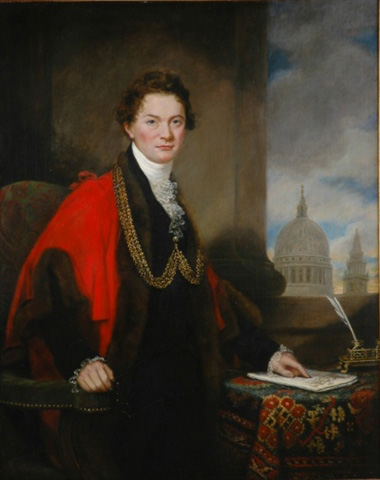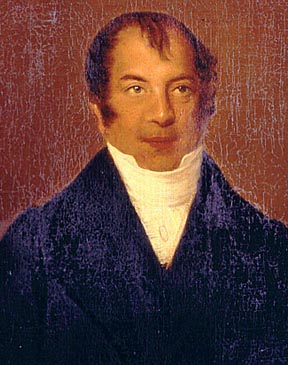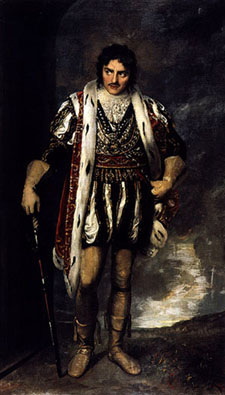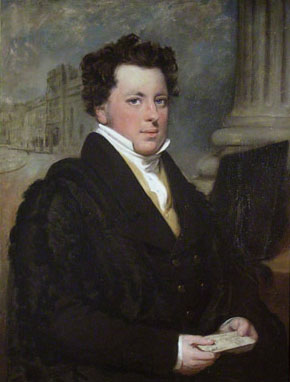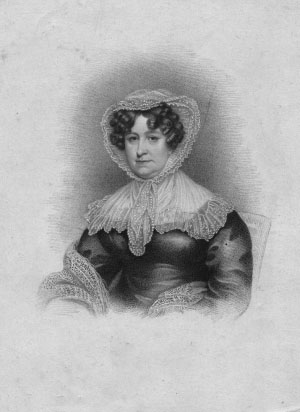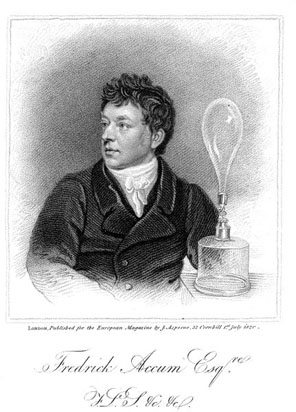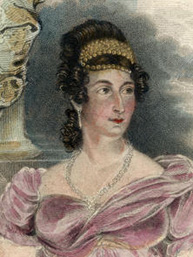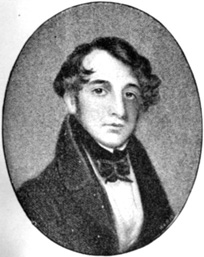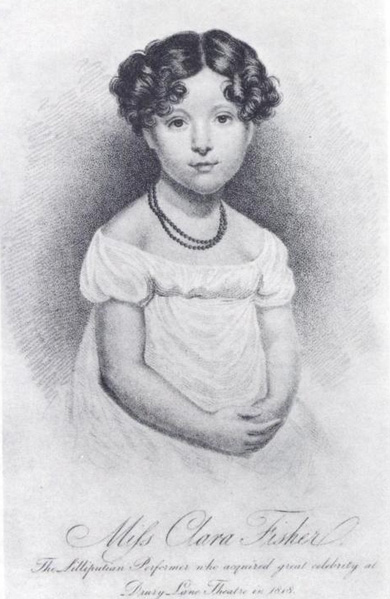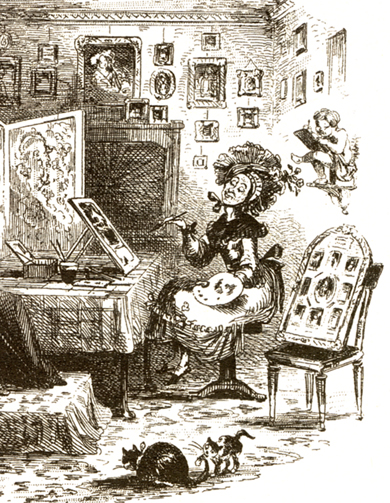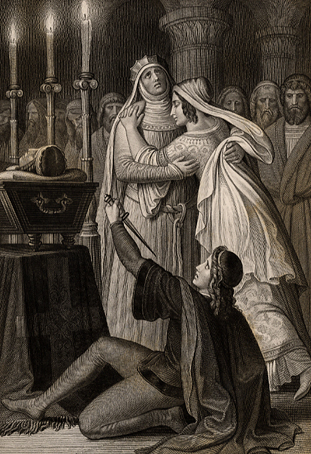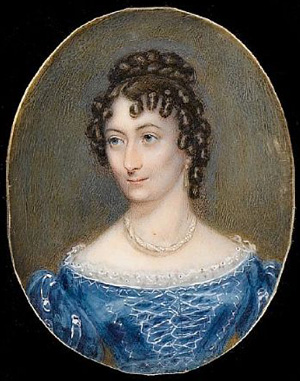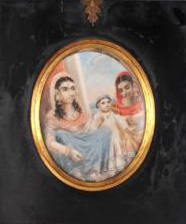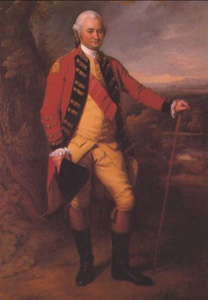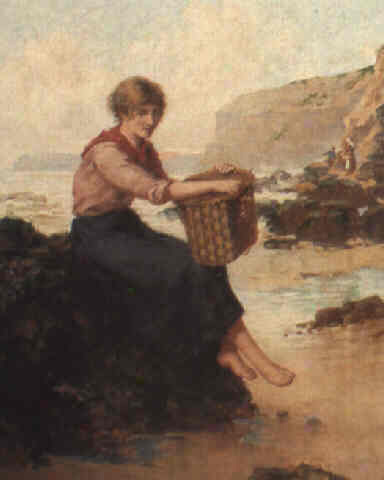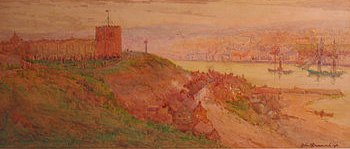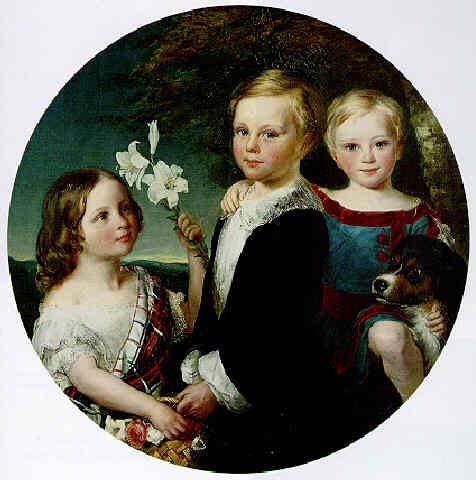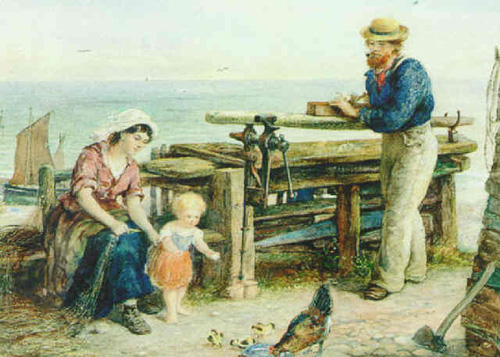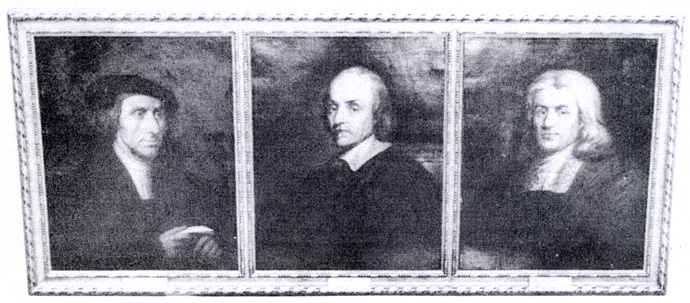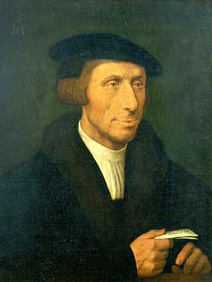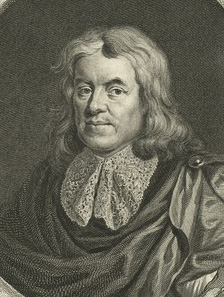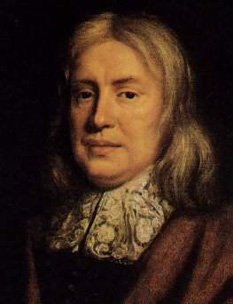|
Rosa Myra Drummond (1816-1888) - artist & portrait painter and wife of the Brighton photographer Harry Pointer |
|||||||||||
| Rosa Myra Drummond
(often referred to as Myra Drummond ) was born in London in
December 1816 and baptised at St Anne's Church, Soho on 20th June 1817. Rosa was the daughter of Samuel Drummond (1766-1844), a portrait
and history painter, and his third wife Ann Holanby (born c1786).
Between 1833 and 1849, under the name of Miss Myra Drummond, Rosa regularly
exhibited her artwork in London galleries. [ A portrait of "Miss Myra
Drummond (artist)" was shown
at the British Institute in
1840 by the Scottish painter
Miss
Margaret Gillies (1803-1887) ].
During this period, Miss Myra Drummond shared a studio and lived with Miss Ellen
Drummond (born c1795, London), one of her half-sisters. Myra Drummond, like other members
of the Drummond family of artists, specialised in portraits of actors and
actresses. In 1839, Miss Drummond achieved some recognition for her full-length
portrait of the famous actress Helena Saville Faucit (1817-1898).
[See illustration below]. Although she was a
talented artist, in the 1840s Myra Drummond was finding it difficult to make a living
from her art work, especially
after the death of her father in 1844. Miss Camilla Dufour Toulmin (1812-1895), an author and poet who went on to marry an American-born wine merchant Newton Crosland (1819-1899), became friendly with Rosa Myra Drummond and in her memoir "Landmarks of a Literary Life", she left a "pen portrait" of the artist, who was then aged around 30.
As a portraitist, Rosa Myra Drummond, appears to have devoted much of her time drawing and painting likenesses of personalities from the theatrical world. In 1835, it is recorded that Miss Rosa Myra Drummond exhibited a "Portrait of an actress" at the British Institution for Promoting the Fine Arts in London. In 1838, Miss Myra Drummond exhibited a painting at the Royal Adademy entitled "Portrait of Mr Charles Kean in the Character of Hamlet." Charles John Kean (1811-1868), a theatre manager and actor, had just made a successful appearance in the lead role of William Shakespeare's Hamlet at the Drury Lane Theatre. Rosa Myra Drummond's chalk study of the head of Charles John Kean has survived and can be seen at the National Portrait Gallery. Two years later, in 1840, Miss Drummond exhibited a portrait of the famous tenor William Harrison in the role of Captain Macheath, the main character in John Gay's musical play "The Beggar's Opera". Early in 1839, Myra Drummond had her greatest success with a full-length portrait of the well-known actress Helena Faucit (1817-1898) dressed for the role of 'Pauline Deschappelles' in Edward Bulwer-Lytton's romantic drama "Lady of Lyons". Mrs Newton Crosland remarked that Myra Drummond's portrait of Helena Faucit was a "beautiful picture, that through the engravings of it, was well known at the time ... and must, indeed, be familiar to many people still."
Despite her success with her portrait of the actress Helena Faucit, by the mid-1840s Rosa Myra Drummond was finding it difficult to sell her paintings. The novelist Mrs Newton Crosland (Camilla Dufour Toulmin) commented that Myra Drummond was "a young artist who certainly deserved a wider popularity than she ever attained". There is some evidence that Miss Drummond derived a modest income by painting small portraits and miniatures. A recently discovered oil painting by Rosa Myra Drummond, depicting a "a cleric, seated, with a book, three quarter length", carried on the reverse, a contemporary label headed 'Miss Drummond's list of charges for portraits & miniatures'. Some time around 1848, Mrs Newton Crosland visited Miss Drummond at "her studio on a first floor, in one of the streets off the Tottenham Court Road". Mrs Crosland, who was married to a prosperous wine merchant, was concerned about Miss Drummond's poor living conditions :
Rosa Myra Drummond never found a wealthy or powerful patron, but she did find a young man who was willing to provide assistance and support in her artistic endeavours. Mrs Newton Crosland could not hide her dismay when she discovered that Miss Drummond had taken up with a twenty-five year old soldier serving with the 1st Life Guards Regiment. Corporal Harry Pointer, a tall, strongly built son of a Berkshire farm labourer, had posed for Miss Drummond after she had sought a young man with muscular legs to serve as a model for a Roman soldier she was painting. Mrs Newton Crosland remarked that Corporal Harry Pointer "served for other subjects besides the Roman soldier" and "had been of the greatest service to her". Mrs Crosland added : "In hours off duty he also carried Myra Drummond's paintings to the picture dealer for sale , with instructions, I am afraid, to take almost anything that was offered for them". Rosa Myra Drummond married Corporal Henry Pointer at St Andrew's Church, Clewer, near Windsor, on 11th August 1849. On the marriage certificate, Rosa signed her name as "Rose Myra Drummond" and, although she does not state her profession on the certificate, she proudly declared that she was the daughter of Samuel Drummond, Artist and "Member of Royal Academy". The marriage was witnessed by Miss Ellen Drummond, presumably Rosa's sister who shared a studio and living quarters with the young artist in the early 1840s.After her marriage, Mrs Pointer found a new apartment in the Regents Park area of London, but her artistic career was interrupted by the arrival of two children in quick succession. A boy named Harry Pointer junior was born in London during the 3rd Quarter of 1851 and a second child, Myra Pointer, less than a year later during the 2nd Quarter of 1852. Harry Pointer continued to serve as a soldier in the Life Guards Regiment based at the Hyde Park barracks in Knightsbridge. Mrs Pointer earned a little money from portrait painting during the early years of her marriage and, according to Mrs Newton Crosland, she received "some portrait-painting commissions" from "one of the officers in her husband's regiment". It appears the officer had known Mrs Pointer's father, the artist Samuel Drummond (1765-1844). Mrs Pointer also completed some larger history paintings during this period, exhibiting a work entitled "Roman Drovers" at the British Institution in 1856.Some time before April 1861, Harry Pointer left the army and together with his wife and two children moved down to the Sussex seaside town of Brighton. The Pointers eventually found a house in Bloomsbury Place, a street that ran down to the seafront at Marine Parade in the eastern Kemp Town area of Brighton. Harry Pointer, a veteran soldier, set himself up as an "Instructor in Military Drill", while Mrs Pointer worked as a portrait painter from 15 Bloomsbury Place. During her years as an artist in Brighton, Mrs Pointer was primarily a portrait painter, but in 1868, under the name of Myra Drummond Pointer, she exhibited at the Society of Lady Artists a painting entitled "Elaine", which was based on an Arthurian legend. Mrs Rosa Myra Pointer was recorded as an artist and portrait painter in Brighton street and trade directories for a period of nearly twenty years, from 1861 until 1880. Rosa Myra Pointer, died in Brighton during the 3rd Quarter of 1888. When her death was registered, Mrs Pointer's age was given as 62, but if the official record of her birth and baptism is correct, Rosa Myra Pointer would have been seventy-one years of age when she passed away. Mrs Pointer's daughter Myra Pointer (born 1852, Regents Park, London), described as an 'Artist' and "Painter in Oils" in the 1881 census, worked as an artist and photographer in Brighton during her mature years. A study of a dog's head drawn by Myra Pointer, signed and dated 1886, was sold at Sotheby's auction house in January 2001. |
[ABOVE] A portrait of the artist Samuel Drummond (1766-1844), the father of Rosa Myra Drummond, the artist and portrait painter who married Harry Pointer in 1849.
[ABOVE] Extracts from The Royal Academy Exhibition catalogues giving details of works exhibited by (Rosa) Myra Drummond in 1838 and 1840. One of the paintings shown by Miss Myra Drummond at the 1838 Royal Academy Exhibition was a portrait of "Mr Charles Kean in the character of Hamlet". (A chalk drawing of the head of Charles Kean, a preparatory study for the painting, is shown below). Exhibiting alongside Myra Pointer was Miss Ellen Drummond (born c1795), Rosa Myra Drummond's elder sister. Myra and Ellen Drummond shared a home and studio between 1838 and 1846.
[ABOVE] A chalk study of the head of Charles John Kean (1811-1868), actor and theatre manager, drawn by Rosa Myra Drummond (1816-1888). When this portrait was made around 1838, Charles John Kean was a young actor who had just made a successful appearance in the lead role of Shakespeare's Hamlet at the Drury Lane Theatre. Rosa Myra Drummond, who exhibited her work under the name of Miss Myra Pointer, was the youngest daughter of the artist Samuel Drummond (1766-1844).
[ABOVE] Miss Myra Drummond and Miss Ellen Drummond listed at the same home address of 87 Newman Street, London in the Alphabetical List of Exhibitors published in The Catalogue of The Royal Academy Exhibition of 1840.
[ABOVE] A painting of a private soldier in the 1st Life Guards Regiment painted by Alexandre-Jean Dubois Drahonet (1791-1834). Harry Pointer was serving as a private in the 1st Life Guards Regiment when he modelled for the artist Miss Rosa Myra Drummond around 1848. Miss Drummond married Harry Pointer in 1849.
[ABOVE] "Nameless and Friendless", a painting by the woman artist Emily Mary Osborn (1857). The painting depicts a young woman artist, accompanied by a boy carrying her portfolio, showing a painting to an art dealer in the hope that he will buy her work. This scene might have been mirrored a few years later when Mrs Myra Pointer, perhaps accompanied by her young son Harry Pointer junior, tried to sell her paintings in London.
[ABOVE] A listing of the inhabitants of Brighton with the surname of Pointer, as listed in Folthorp's General Directory for Brighton (1864). Mr Harry Pointer, an ex-soldier, is listed as a "drilling master" at 15 Bloomsbury Place, Brighton. Harry's wife, Mrs Rosa Myra Pointer, is listed as a "portrait painter" at the same address. A portrait painter with the name of Mrs Myra Pointer was recorded at Bloomsbury Place in local trade directories from 1862 until 1880.
[ABOVE] A list of Artists residing in Brighton, as printed in the Professions and Trades Section of Thomas Page's General Directory for Brighton (1865). Mrs Rosa Myra Pointer, mentioned elsewhere in the directory as a portrait painter, is listed as an artist at 15 Bloomsbury Place, Brighton. Miss Ellen Drummond (born c1827, London), a portrait painter living at 5 Clarendon Place, Brighton, was probably a close relative of Mrs Pointer. |
||||||||||
